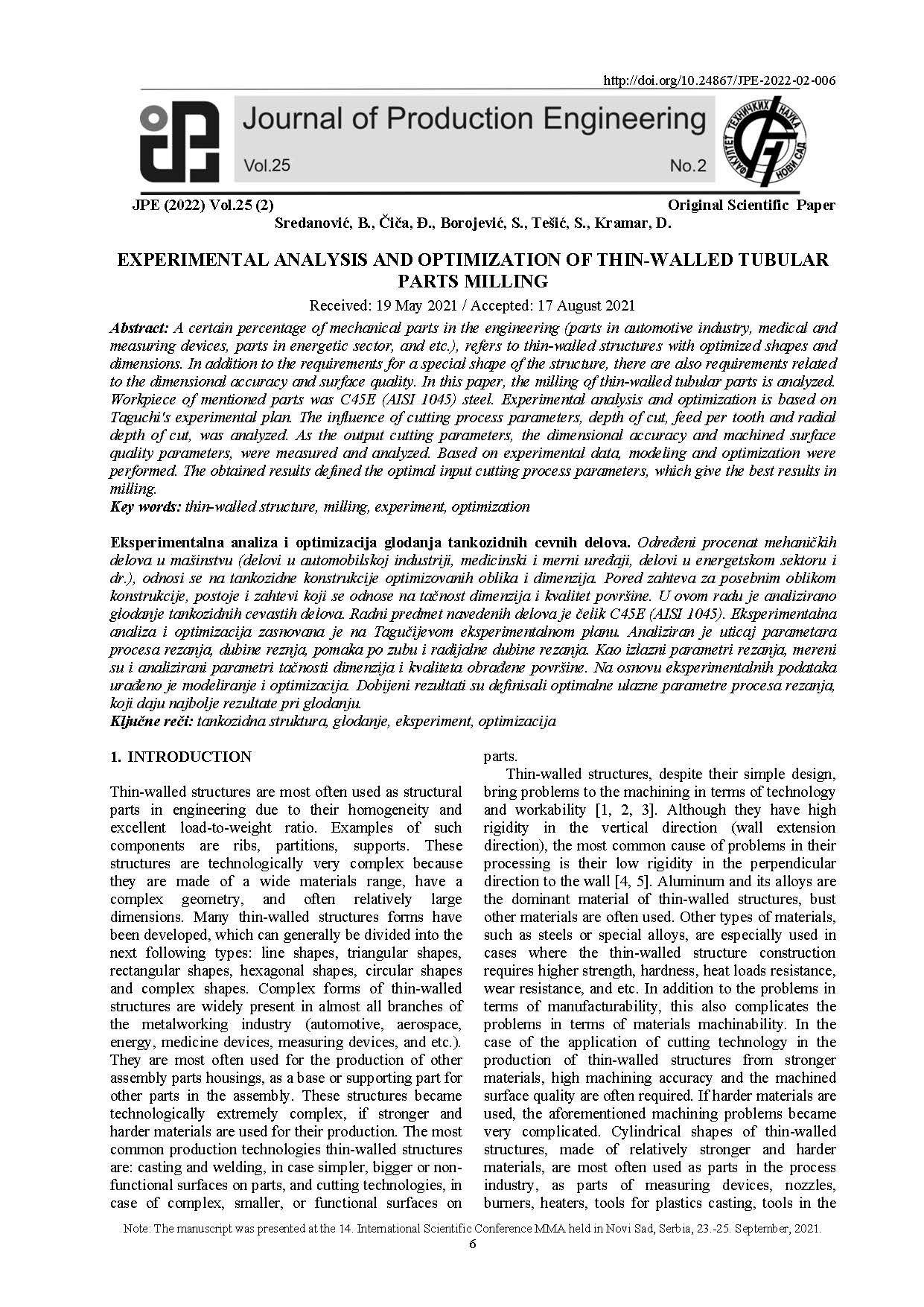
Published 2022-12-01
abstract views: 55 // FULL TEXT ARTICLE (PDF): 19
Keywords
- thin-walled structure,
- milling,
- experiment,
- optimization
How to Cite
Copyright (c) 2023 Journal of Production Engineering

This work is licensed under a Creative Commons Attribution 4.0 International License.
Abstract
A certain percentage of mechanical parts in the engineering (parts in automotive industry, medical and measuring devices, parts in energetic sector, and etc.), refers to thin-walled structures with optimized shapes and dimensions. In addition to the requirements for a special shape of the structure, there are also requirements related to the dimensional accuracy and surface quality. In this paper, the milling of thin-walled tubular parts is analyzed. Workpiece of mentioned parts was C45E (AISI 1045) steel. Experimental analysis and optimization is based on Taguchi's experimental plan. The influence of cutting process parameters, depth of cut, feed per tooth and radial depth of cut, was analyzed. As the output cutting parameters, the dimensional accuracy and machined surface quality parameters, were measured and analyzed. Based on experimental data, modeling and optimization were performed. The obtained results defined the optimal input cutting process parameters, which give the best results in milling.

